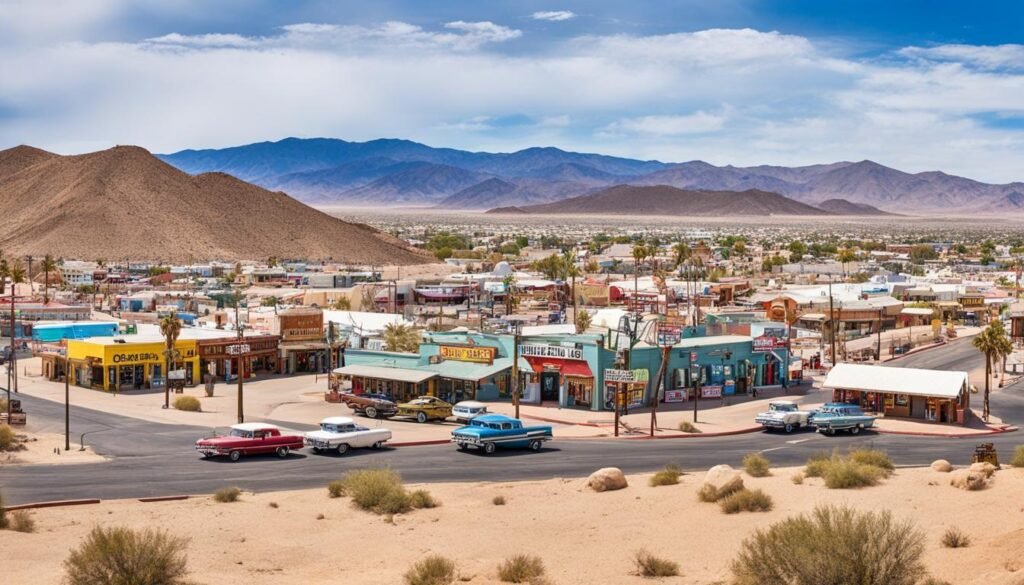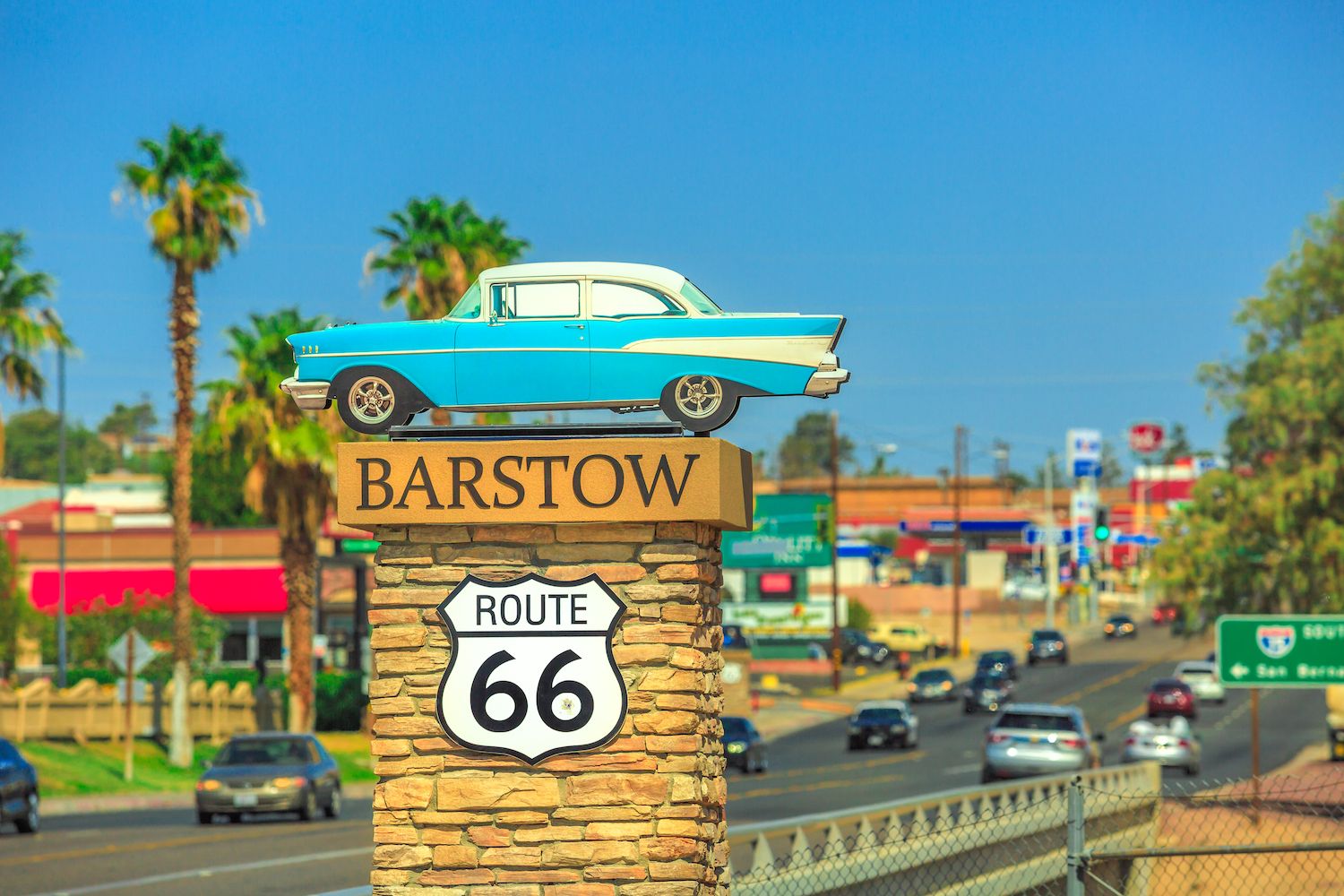
The Unseen Threads: America’s Enduring Legends, From Frontier Myth to Desert Dreams in Barstow
America is a land woven from narratives, a vast tapestry where history bleeds into myth, and the mundane can suddenly touch the marvelous. From the towering lumberjacks of the North to the spectral figures of the desert, these legends are more than mere stories; they are the collective unconscious of a nation, reflecting its aspirations, anxieties, and the sheer scale of its ambition. They are the unseen threads that bind a diverse people, passed down through generations, often finding unexpected anchors in the most unassuming of places – places like Barstow, California, a town etched into the legend of the American road.
The genesis of many American legends lies in the rugged individualism and expansive wilderness of its early history. The frontier was not just a physical boundary but a crucible where ordinary men were forged into titans, their deeds exaggerated by campfire tales and the sheer awe of a land waiting to be tamed. Consider Paul Bunyan, the colossal logger whose axe carved out lakes and whose footsteps created valleys. Accompanied by his blue ox, Babe, Bunyan is the quintessential American hero: strong, resourceful, and capable of bending nature to his will. His tales, born in the logging camps of the Great Lakes, spoke to the monumental task of clearing forests and building a nation. He embodied the manifest destiny of a young country, a larger-than-life figure who could conquer any challenge.
Similarly, Johnny Appleseed, born John Chapman, transformed into a benevolent wanderer, scattering apple seeds across the burgeoning nation. While a real person, his legend blossomed into that of a selfless pioneer, a symbol of growth, sustainability, and the gentle taming of the wilderness. He wasn’t conquering with an axe, but nurturing with a seed, leaving behind a legacy of orchards that fed generations. These figures, whether of superhuman strength or quiet dedication, laid the groundwork for a national mythology that celebrated hard work, ingenuity, and an unwavering spirit in the face of the unknown.

As the nation pushed westward, new legends emerged, often born from the clash between man and the unforgiving landscape. The railroads, stretching like iron veins across the continent, gave rise to figures like John Henry, the "steel-driving man." His legend, rooted in the post-Civil War era, tells of an African American railroad worker who out-raced a steam-powered drill in a tunnel-boring contest, winning but dying from exhaustion. John Henry is a powerful allegory for the human cost of industrial progress, a testament to resilience, dignity, and the struggle against the dehumanizing march of machinery. His story resonated deeply with laborers and marginalized communities, becoming a symbol of enduring strength and the fight for human value in a rapidly changing world.
The vast, arid expanses of the Southwest also birthed their own pantheon of heroes and anti-heroes. Pecos Bill, the legendary cowboy, was said to have been raised by coyotes, wrestled a cyclone, and ridden a mountain lion. He personified the rugged, independent spirit of the cowboy, a master of the harsh desert environment, embodying the freedom and lawlessness of the untamed West. These legends, whether of axe-wielding giants or lasso-wielding cowboys, were more than entertainment; they were moral compasses, cautionary tales, and inspiring sagas that helped define what it meant to be American.
Yet, American legends are not solely confined to the historical or the human. The continent’s sheer scale and its myriad hidden corners have always invited speculation about the unexplained. The forests of the Pacific Northwest whisper tales of Bigfoot, or Sasquatch, a large, ape-like creature whose elusive sightings fuel a persistent modern myth. Is it an undiscovered primate, a figment of imagination, or a spiritual guardian of the wilderness? The mystery endures, a testament to humanity’s desire to believe in something beyond the mundane, a wildness that science cannot fully categorize.
And then there are the skies. The mid-20th century, with its technological leaps and Cold War anxieties, saw the rise of the UFO phenomenon. The alleged crash of an alien spacecraft in Roswell, New Mexico, in 1947, remains one of the most iconic and debated modern American legends. This event, and the subsequent government secrecy, sparked a nationwide fascination with extraterrestrial life, turning ordinary citizens into amateur investigators and transforming remote desert landscapes into potential landing zones. The legend of Roswell, and the broader belief in UFOs, taps into a primal human curiosity about our place in the cosmos and a deep-seated distrust of authority.
It is here, in the confluence of historical narrative, human endeavor, and unexplained phenomena, that we can find a remarkable lens through which to view America’s legends: the town of Barstow, California. Situated in the Mojave Desert, Barstow is more than just a dot on a map; it’s a historical waypoint, a transportation hub, and a place where the threads of American myth often intersect.
Barstow’s very existence is a testament to the pioneering spirit. Founded as a railroad town in the late 19th century, it was a crucial link in the iron arteries that connected the East to the burgeoning West. The laborers who built those tracks, the engineers who drove the steam engines, and the prospectors who passed through its dusty streets all contributed to the tapestry of the American dream. While no Paul Bunyan or John Henry stories are directly attributed to Barstow, the spirit that birthed those legends—the struggle against a formidable landscape, the ambition to build and connect—is palpable in its history. The hardscrabble existence of early desert settlers and the relentless work of railroad men echo the themes of grit and perseverance found in the frontier myths.
Moreover, Barstow sits squarely on the legendary Route 66, "The Mother Road." Route 66 itself is a legend, a symbol of freedom, adventure, and the open road. It represents the quintessential American journey, a ribbon of asphalt stretching from Chicago to Santa Monica, carrying dreamers, migrants, and adventurers. Barstow, with its iconic diners, motels, and quirky roadside attractions, became a vital stop along this mythic highway. Every car that passed through carried stories, hopes, and fears, contributing to the collective narrative of the American migration. Drivers, weary from the desert heat, found respite and exchanged tales, perhaps even sharing whispers of strange lights in the desert sky or ghostly hitchhikers.
The Mojave Desert surrounding Barstow is a landscape ripe for the unexplained. Its vast, often desolate expanses are perfect for imagining the hidden. Tales of lost mines, spectral prospectors, and strange desert creatures abound. The proximity to military installations like Edwards Air Force Base and the broader association of the desert with top-secret projects (like the fabled Area 51 further east) naturally feeds into the UFO mythology. Barstow, therefore, becomes a place where the modern legends of the unexplained find a comfortable home, a backdrop against which the line between reality and speculation blurs. One can easily imagine a trucker in a Barstow diner recounting a peculiar experience on a lonely stretch of highway, or a local sharing a story about an unexplained phenomenon in the vast desert night.

As journalist William Least Heat-Moon wrote in his seminal work "Blue Highways," about America’s forgotten roads: "A true voyage of discovery is not to seek new landscapes, but to have new eyes." Barstow, in its unassuming role as a waystation, invites us to look with new eyes at the landscape of American legends. It is a place where the echoes of frontier ambition mingle with the hum of modern machinery, where the vastness of the desert invites both scientific exploration and supernatural speculation. It is a microcosm of America itself – a blend of the ordinary and the extraordinary, where the past constantly informs the present, and where the human need for story continues to thrive.
In conclusion, America’s legends, from the brawny deeds of Paul Bunyan to the enigmatic sightings of Bigfoot, are not static historical artifacts. They are living, breathing narratives that continue to evolve, reflecting the ever-changing face of the nation. They are the stories we tell ourselves to understand who we are, where we came from, and what we might yet become. And in places like Barstow, a town forged in the crucible of westward expansion and sustained by the arteries of transportation, these legends find fertile ground. It is a reminder that even in the most ordinary of places, the extraordinary can take root, and the unseen threads of America’s enduring legends continue to weave their magic, shaping our collective imagination and defining the very soul of the land.


